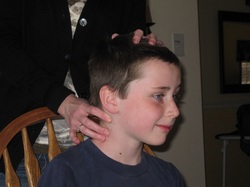Blue Orchid Massage
 The Myokinesthetic System is a unique, non-invasive technique that offers real pain relief and lasting results. This is not a massage technique and no lotion or oils are used. You remain fully clothed and each session can last between 15-45 minutes. By addressing a specific problem within the body, you can clear the muscle memory and re-educate the muscle. This is done by stretching with stimulation to each muscle along the nerve root causing the problem. When I first took the class I was a bit skeptic of how fast results could be seen. It was about 2 months after I took the class that my right shoulder started to act up. I woke up one day and I could not put on a shirt or reach behind me without extreme pain. Given my occupation (massage therapist), this was not okay and needed to be fixed very soon. My husband preformed the treatment on me, as I walked him through it. That night I didn’t notice much change, but the next morning I was completely pain-free!!! To say the least I was pretty amazed and convinced in the Myokinesthetic System. Now I must point out that I was able to see lasting results so soon only because I acted quickly. But by no means am I saying you won’t see results from an injury you’ve had for 5 years, it just may take 5-8 sessions. If you’re interested in the Myokinesthetic System, you can get more information HERE |
Heather McNay
I've been a Licensed Massage Therapist since 2006. In my free time I enjoy hiking with my husband and dog. I also have a passion for cooking, baking and gardening. Archives
August 2022
Categories |
Proudly powered by Weebly
 RSS Feed
RSS Feed